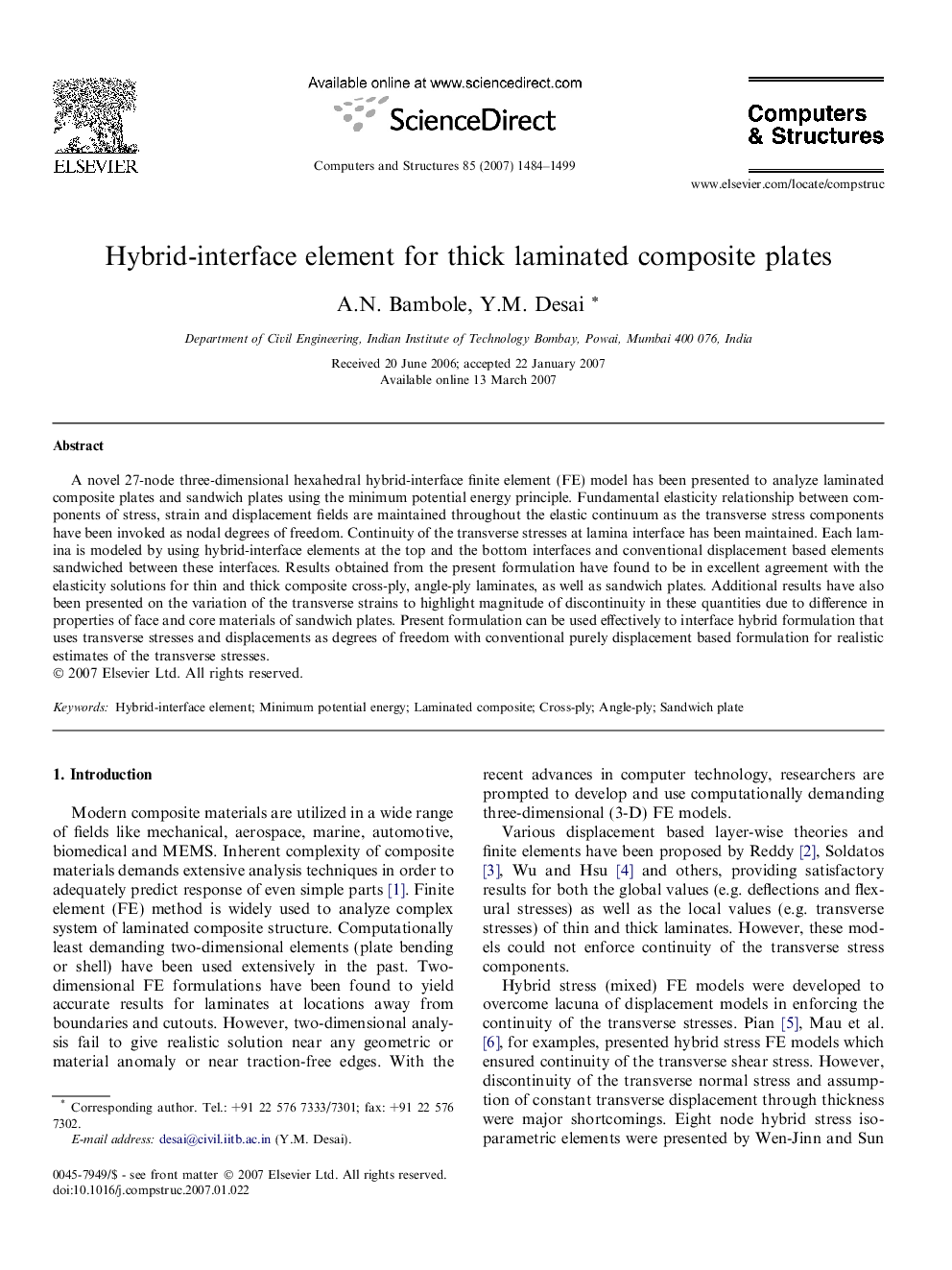| Article ID | Journal | Published Year | Pages | File Type |
|---|---|---|---|---|
| 511437 | Computers & Structures | 2007 | 16 Pages |
A novel 27-node three-dimensional hexahedral hybrid-interface finite element (FE) model has been presented to analyze laminated composite plates and sandwich plates using the minimum potential energy principle. Fundamental elasticity relationship between components of stress, strain and displacement fields are maintained throughout the elastic continuum as the transverse stress components have been invoked as nodal degrees of freedom. Continuity of the transverse stresses at lamina interface has been maintained. Each lamina is modeled by using hybrid-interface elements at the top and the bottom interfaces and conventional displacement based elements sandwiched between these interfaces. Results obtained from the present formulation have found to be in excellent agreement with the elasticity solutions for thin and thick composite cross-ply, angle-ply laminates, as well as sandwich plates. Additional results have also been presented on the variation of the transverse strains to highlight magnitude of discontinuity in these quantities due to difference in properties of face and core materials of sandwich plates. Present formulation can be used effectively to interface hybrid formulation that uses transverse stresses and displacements as degrees of freedom with conventional purely displacement based formulation for realistic estimates of the transverse stresses.
